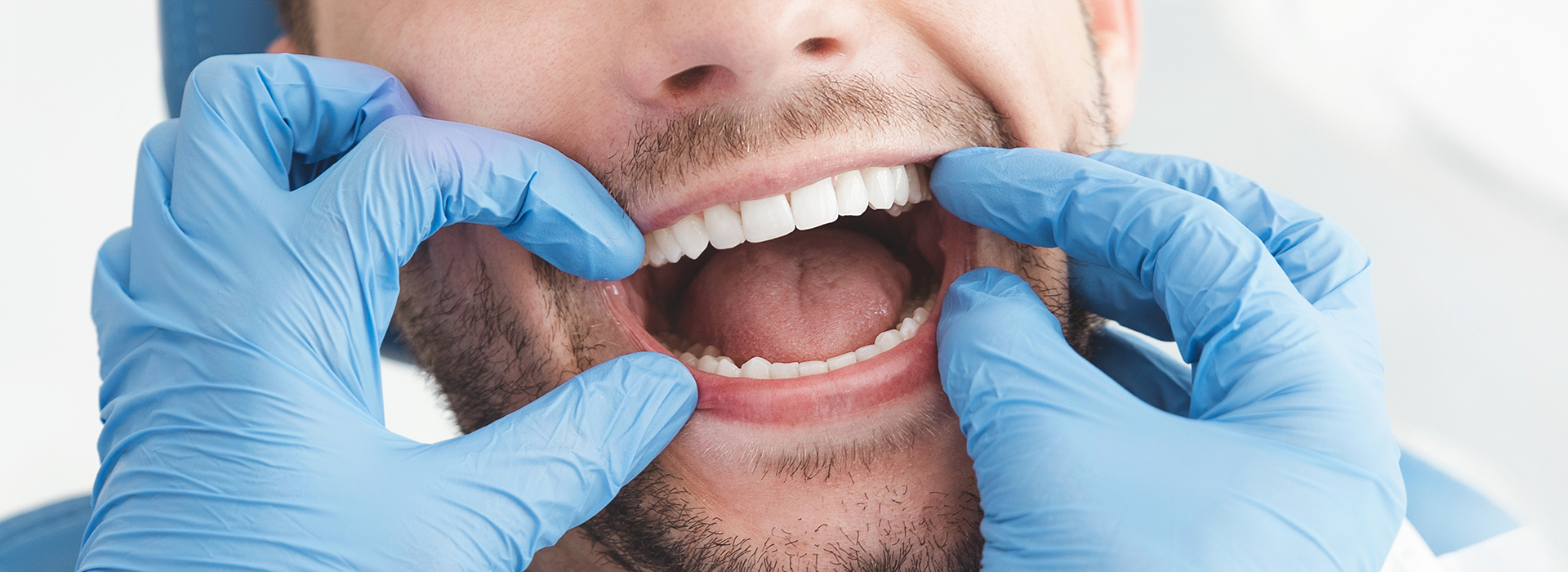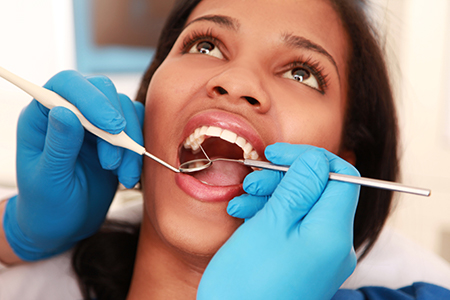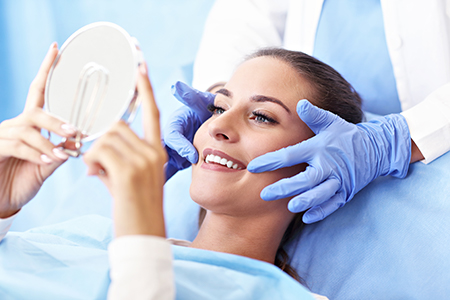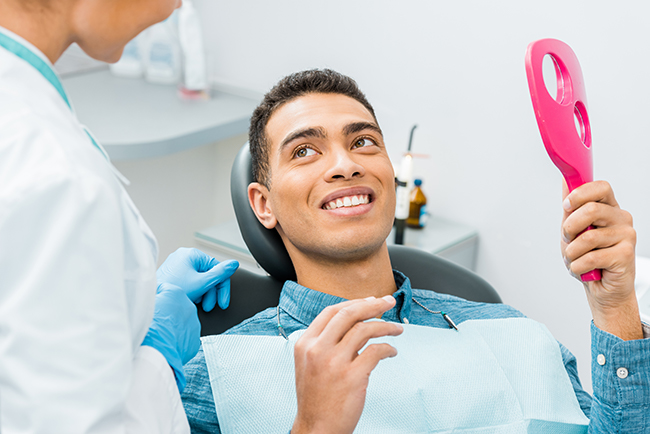Call Us Today!
(905) 689-7474

Our Office
Visit Us Online

At the office of City Smiles Dental, we take a preventive-first approach to oral health. Regular oral exams are the foundation of care — they help us catch small problems before they become larger, coordinate treatments across a lifetime, and give each patient a clear plan for maintaining a healthy, confident smile. Our preventive services include thorough examinations, professional cleanings, oral cancer screenings, and practical guidance on daily hygiene and nutrition to support long-term oral wellness.
Your initial checkup is an opportunity for us to learn about you and to build an accurate picture of your oral health. We begin by reviewing your medical and dental history and asking about any symptoms, medications, or lifestyle factors that could affect your mouth. From there, we perform a careful clinical exam of the teeth, gums, and soft tissues and evaluate your bite and jaw function to identify any early signs of trouble.
The exam often includes a periodontal assessment to check gum health and measure pocket depths where appropriate. If needed, we will recommend targeted diagnostic images so we can see below the surface. During the visit, our team will also assess signs of wear from clenching or grinding and note any areas where plaque and tartar accumulation are present.
We strive to make the first visit informative and collaborative. Based on what we find, we will explain any follow-up care or monitoring recommended, discuss realistic options, and answer your questions so you leave knowing the next steps for preserving and improving your oral health.

Oral tissues can reflect broader health issues. During an exam, we look not only for cavities and gum disease but also for signs that may indicate systemic conditions. In many cases, changes in the mouth — such as persistent dry mouth, ulcers that do not heal, or unusual bleeding — provide early clues that warrant further attention or medical follow-up.
Research increasingly shows connections between oral conditions and general health. Chronic inflammation in the mouth can influence other body systems, and conversely, systemic diseases can present oral symptoms. Because of these links, a comprehensive oral exam is an important element of preventive health care and coordination with your medical providers when needed.
We also perform routine oral cancer screenings as part of a complete exam, looking for any abnormal growths, texture changes, or discoloration in the tissues of the mouth, throat, head, and neck. Early detection improves outcomes, so these checks are a valuable component of every routine visit.
Common systemic issues that may be associated with oral signs include:
Digestive disorders
Respiratory problems
Cardiovascular disease
Stroke
Diabetes
Alzheimer's disease

Daily brushing and flossing are essential, but professional cleanings reach the spots household tools can miss. During a cleaning, we remove plaque and hardened tartar from around teeth and below the gumline, polish surfaces to remove stains, and provide targeted instruction to improve your homecare routine. These visits help prevent cavities and periodontal disease and keep your mouth feeling fresh.
We encourage regular checkups so we can monitor changes over time and intervene early when a problem is emerging. For children, routine visits also include age-appropriate education and monitoring of dental and jaw development to determine whether future orthodontic evaluation might be helpful. Establishing preventive habits early promotes a lifetime of better oral health.
Every cleaning and checkup is an opportunity for personalized coaching. Our hygienists demonstrate effective brushing and flossing techniques, recommend tools that may suit your needs, and suggest small, practical changes that can make a big difference in maintaining healthy teeth and gums.
We aim to make preventive care comfortable and convenient so that patients of all ages view routine visits as a normal, positive part of their health maintenance.
Visual inspection alone does not reveal the full picture. Dental radiographs allow us to examine the internal structure of teeth, the supporting bone, and the surrounding tissues. X-rays help detect early-stage decay between teeth, assess root health and bone levels, and identify problems beneath restorations that are not visible to the naked eye.
Digital radiography has transformed how we capture and use images. Modern sensors produce high-resolution images with far less radiation than older film techniques. Images appear almost instantly on a screen, can be enhanced for clearer interpretation, and are stored securely in your record for comparison over time.
Digital imaging offers several practical benefits to patients and clinicians:
Lower radiation exposure and faster acquisition
Immediate viewing and the ability to magnify or enhance images for better diagnosis
Efficient electronic storage and safe file sharing with specialists when collaborative care is needed
No chemical developing, which reduces waste and environmental impact

The specific radiographs we recommend depend on your clinical needs. A periapical image focuses on an individual tooth from crown to root and is useful for evaluating root health and nearby bone. Bitewing films show the crowns of back teeth and are especially helpful for detecting decay between teeth. A full mouth series combines multiple periapical and bitewing views to document the entire dentition when a comprehensive assessment is required.
Panoramic films provide a broad view of the jaws, erupted and developing teeth, and general jawbone structure. Cephalometric images are taken less frequently but are valuable in orthodontic planning because they show the facial profile and relationships among skeletal structures. For complex treatment planning — such as evaluating anatomical structures for implant placement — three-dimensional cone-beam computed tomography (CBCT) can offer precise, volumetric information to guide care.
Our team tailors imaging choices to minimize exposure while maximizing diagnostic value. We balance the need for information with each patient's history and current concerns, and we explain the reasons for any images we recommend so you understand their role in your care.
At City Smiles Dental, thorough oral exams and thoughtful use of diagnostic tools form the backbone of preventive, restorative, and surgical decision-making. If you have questions about what an oral exam includes or whether you need imaging, please contact us to learn more about how we can help protect your oral health.
An oral exam is a comprehensive evaluation of the teeth, gums, soft tissues, bite and jaw function designed to detect problems early. Routine exams let clinicians identify decay, gum disease, wear from grinding, and other issues before they progress. By finding concerns early we can recommend conservative treatments and monitor changes over time.
Oral exams also provide an opportunity to review medical history, medications and lifestyle factors that affect oral health. They form the basis of a personalized prevention plan and coordinate care with other providers when systemic issues are suspected. Regular exams support long-term oral wellness and help patients maintain a confident smile.
Your first oral exam begins with a review of your medical and dental history and a discussion of any symptoms or concerns you may have. The clinician performs a clinical inspection of teeth, gums and soft tissues, evaluates bite and jaw movement, and often completes a periodontal assessment to measure gum pocket depths. When indicated, targeted diagnostic images are recommended to evaluate structures below the surface.
During the visit the dental team will document areas of plaque and tartar, look for signs of wear from clenching or grinding and assess the need for immediate or preventive treatments. We explain our findings in clear terms and outline recommended next steps or monitoring plans. The goal is to make the first visit collaborative so you leave informed and comfortable with the care plan.
The mouth can reveal early clues about systemic health because many medical conditions have oral symptoms or manifestations. During an exam we look for persistent dry mouth, ulcers that do not heal, unusual bleeding, mucosal changes and other signs that may warrant medical follow-up. Identifying these findings early allows us to coordinate care with your physician or other specialists when necessary.
Research shows links between oral inflammation and systemic diseases such as diabetes and cardiovascular conditions, so routine exams play a role in overall health monitoring. When appropriate we communicate our observations to your medical providers and recommend further evaluation. This integrated approach helps protect both oral and general health.
Frequency depends on your individual risk factors, oral health status and history of disease, but many patients start with exams every six months. People with active periodontal disease, a history of frequent decay, certain medical conditions or habits like tobacco use may need more frequent visits for monitoring and preventive care. Your clinician will recommend an interval tailored to your needs after assessing your condition.
Regular checkups allow us to track changes over time and intervene early when new problems emerge, reducing the need for more extensive treatment later. For children, exams also include developmental monitoring and age-appropriate guidance to support long-term oral health. Establishing a consistent recall schedule helps maintain healthy teeth and gums throughout life.
A professional dental cleaning removes plaque and hardened tartar from above and below the gumline using specialized instruments and polishing techniques. Cleanings reach areas that routine home care can miss and help prevent cavities and periodontal disease by reducing bacterial buildup. Hygienists also remove stains, smooth tooth surfaces and evaluate oral hygiene effectiveness.
During the cleaning visit the team provides tailored coaching on brushing and flossing techniques and may recommend tools like interdental brushes or rinses to suit your needs. These appointments are an opportunity to reinforce preventive habits and address small problems before they escalate. Regular professional cleanings are a key component of a lasting preventive plan.
Dental X-rays reveal decay between teeth, root and bone conditions, and restorations that are not visible during a clinical exam, which helps with accurate diagnosis and treatment planning. Modern digital radiography produces high-resolution images with substantially lower radiation exposure than traditional film techniques. Images are available instantly for review and can be enhanced to aid interpretation.
Digital sensors also allow efficient storage and secure sharing with specialists when collaborative care is needed, and they eliminate chemical developing for reduced environmental impact. Clinicians balance the need for diagnostic information with minimizing exposure and only recommend images that are clinically justified. If you have concerns about imaging, the team will explain the reasons and safety measures used.
The imaging selected depends on clinical needs and may include bitewing films to check for interproximal decay, periapical images to evaluate individual tooth roots and surrounding bone, or a full mouth series for comprehensive documentation. Panoramic images provide a broad view of the jaws and developing teeth and are useful for general assessment. For advanced planning, such as implant placement, three-dimensional cone-beam computed tomography (CBCT) offers precise volumetric information.
We tailor imaging choices to each patient to maximize diagnostic value while minimizing exposure. The team explains why a particular image is recommended and how it will inform diagnosis or treatment. Imaging decisions are made in the context of your history, symptoms and overall care goals.
Yes, oral cancer screenings are a standard component of a complete oral exam and involve a careful inspection of the mouth, throat, head and neck for abnormal growths, texture changes or discolorations. Early detection significantly improves outcomes, so clinicians routinely check soft tissues and ask about persistent symptoms such as sores that do not heal or unexplained lumps. If suspicious findings are identified, we recommend timely referral for further evaluation.
Screenings may include adjunctive tools or photographic documentation when appropriate, and any recommendations for follow-up are discussed clearly with the patient. Maintaining regular exams increases the chance of catching concerning changes at an early, more treatable stage. Patients are encouraged to report new or persistent symptoms between visits.
Gum health is evaluated through a periodontal assessment that measures pocket depths around each tooth, checks for bleeding on probing, and assesses attachment levels and bone support. These measurements help distinguish healthy gingiva from gingivitis or periodontitis and guide decisions about preventive or therapeutic care. The clinician also inspects for recession, mobility and signs of inflammation.
When periodontal disease is detected the team outlines a targeted plan that may include scaling and root planing, more frequent maintenance visits, homecare adjustments and coordination with medical providers when systemic factors contribute. Early intervention and consistent supportive care can slow or halt disease progression. Education and personalized oral hygiene coaching are integral parts of treatment and prevention.
You can schedule an oral exam by calling (905) 689-7474 or requesting an appointment through the practice website for the Waterdown, Ontario location. Bring a list of current medications, any recent medical or dental records you have, and details about symptoms or concerns you want to discuss. Arriving a few minutes early helps complete any necessary forms and ensures the visit starts on time.
If you have dental insurance please bring your insurance card or policy information so the office can assist with direct billing when available. Inform the team of any medical conditions, allergies or pregnancy so care can be tailored safely. Clear communication before and during the visit helps the clinicians provide an efficient and personalized exam.
